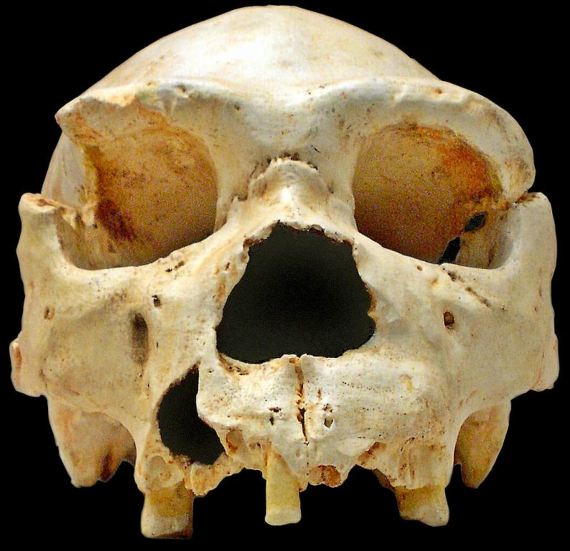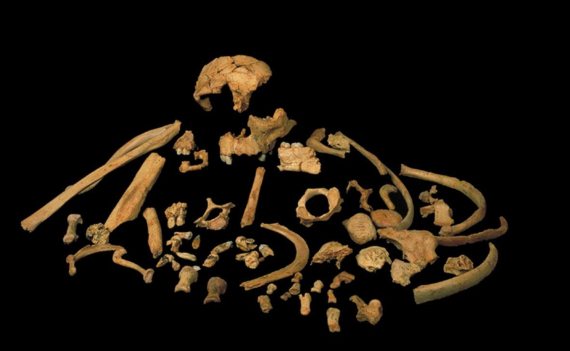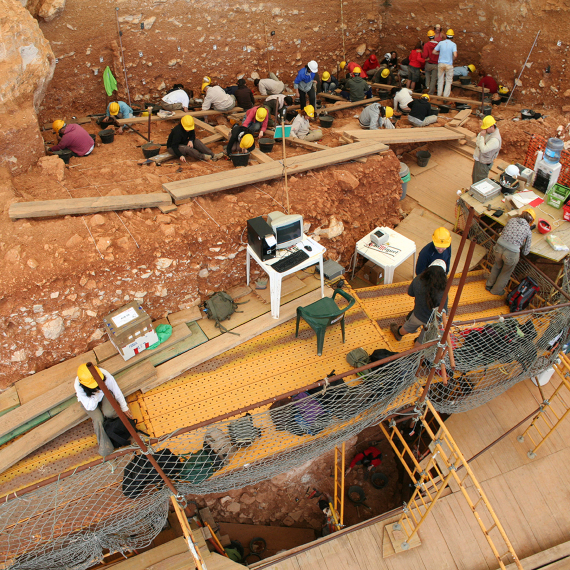There was a time not so long ago when the picture of human evolution seemed fairly well defined. Paleoanthropologists found fossilized skulls, studied their features by comparing them to each other, measured their cranial capacity with mustard seeds, and thereby decided what place the species occupied in those classic drawings of the “march of progress” from apes to humans. But then came the molecular techniques, from genetics to proteomics. Today, it is possible to know the genome of an extinct human species that still has no official name and from which not even a complete skull has been recovered, like the Denisovans, and new DNA tests have complicated the drawing to such an extent that experts no longer even talk about a family tree, but rather a network. And within it there is one great essential node that escapes us: who was our common ancestor with the Neanderthals?

Of at least nine human species that walked the Earth a few hundred thousand years ago, two of them tend to attract special interest. The divergence between modern humans and Neanderthals not only holds an essential key to our evolutionary past, but it also brings us closer to the enigma of how we Homo sapiens, of African origin, managed to wrest the European continent from the native H. neanderthalensis. It has traditionally been proposed that H. heidelbergensis, an ancestor of the Neanderthals that spread through Europe and Africa between 700,000 and 300,000 years ago, could have also originated H. sapiens, perhaps through a derived species such as H. rhodesiensis.
But not only has the fossil record, always incomplete, not confirmed this link, but once again genetic techniques have questioned this schema. In 2016, DNA analysis of remains found in the Sima de los Huesos in the Atapuerca Mountains (Spain) and dated at 430,000 years old, revealed that those individuals were Neanderthals. With this information in hand, the researchers were able to push back the time when the separation between our family branch and that of our European cousins was believed to have occurred, to sometime between 550,000 and almost 800,000 years ago, which, apparently, disqualifies H. heidelbergensis as our common ancestor. But if they were not the grandparents of Neanderthals and modern humans, to whom does such an honour belong?
The oldest Homo found on the continent
In 1997, Spanish researchers José María Bermúdez de Castro, Eudald Carbonell, Juan Luis Arsuaga and their collaborators described a new species found at Atapuerca, which was given the name H. antecessor. The study of its features, with a more modern-looking face than H. heidelbergensis, led the authors to propose that it was the possible common ancestor of Neanderthals and modern humans. The species, later found at other European sites, lived at least 800,000 years ago, making it the oldest Homo found on the continent. However, for decades there has been a debate about its actual position in the human lineage, and some experts have even argued about its status as an independent species.

But the DNA sequencing of the early Neanderthals of Atapuerca put H. antecessor back in the spotlight, pointing to this species as an ideal candidate to occupy that position, just as its discoverers had suggested. This was joined in 2019 by a new comparative study of the dental evolution of several human species, including the Neanderthals of the Sima de los Huesos. The results showed that the divergence between modern humans and Neanderthals must have occurred at least 800,000 years ago; any later date would mean that the teeth of our European cousins had evolved at too fast a rate to be credible. This confirmed the DNA results obtained earlier. As the study’s author, Aida Gomez-Robles of University College London, said at the time, “the simplest explanation is that the divergence between Neanderthals and modern humans was older than 800,000 years. This would make the evolutionary rates of the early Neanderthals from Sima de los Huesos roughly comparable to those found in other species.”
Recently, two new studies have been published which both take the sceptre of being our common ancestor with the Neanderthals from H. heidelbergensis and hand it back to the Atapuerca Man. In the first of these, published in Nature, an international team of researchers led by Rainer Grün, from Griffith University (Australia) and Chris Stringer, from the Natural History Museum in London, has dated the skull called Kabwe 1, a fossil found by miners in 1921 in Broken Hill, in what is now Zambia, and which was assigned to the species H. heidelbergensis. Previously, the age of the skull was believed to be around half a million years. But the new analysis by Grün, Stringer and their collaborators, using a new laser technique that allows only tiny fragments to be removed from the bone, has surprised scientists: 299,000 years. “We reassess it as a separate line of evolution, but one which probably coexisted with the evolution of Homo sapiens,” Stringer told New Scientist.
The oldest proteomes ever obtained
On the same day and also in Nature, another study arrived to fill the gap left by Grün and Stringer’s H. heidelbergensis. A large international project has unravelled the proteome, specifically the sequences of seven proteins, of the dental enamel of H. antecessor from Atapuerca and H. erectus from Dmanisi (Georgia). This is an alternative way of doing genetic analysis: faced with the problems of extracting readable DNA from very old bones —the current limit is around 400,000 years— tooth enamel is the hardest tissue in the skeleton, and the proteins into which that DNA is translated can be found there. Thanks to a mass spectrometry technique perfected at the University of Copenhagen (Denmark), researchers have obtained the oldest proteomes ever obtained from a human species.

“Here the prolonged survival of hominin enamel proteomes is exploited to show that H. antecessor represents a hominin taxon closely related to the last common ancestor of H. sapiens, Neanderthals and Denisovans,” the researchers write. Today, paleoanthropologists tend to avoid assigning the title of common ancestor to a particular species, something very difficult to demonstrate directly, in order to speak more prudently of a “sister group” very close to the common ancestor. “This placement implies that the modern-like face of H. antecessor —that is, similar to that of modern humans— may have a considerably deep ancestry in the genus Homo, and that the cranial morphology of Neanderthals represents a derived form,” they add.
According to the study’s co-director, José María Bermúdez de Castro, from the National Research Centre on Human Evolution in Burgos (Spain), “Homo antecessor would therefore be a basal species of the emerging humanity formed by Neanderthals, Denisovans, and modern humans.” Other experts have welcomed the finding, although still with caution. The common ancestor, Stringer told New Scientist, “has got to be something with a face more like us and H. antecessor.”
In short, and although the candidacy of Atapuerca Man for the title of common ancestor of modern humans and Neanderthals has yet to pass the tests of future discoveries, the prospect of being able to read tooth enamel proteins in fossils up to almost two million years old, as has recently been demonstrated with an Asian hominid, is summarised in the words of Atapuerca study co-author Tomàs Marquès-Bonet from the Centre for Genomic Regulation and Pompeu Fabra University in Barcelona (Spain): “The coming years promise to be fascinating.”
Comments on this publication